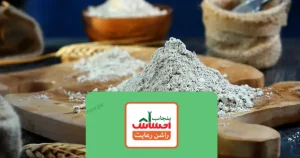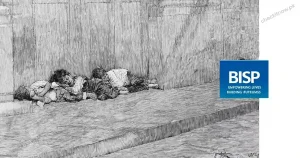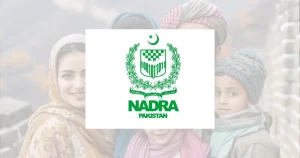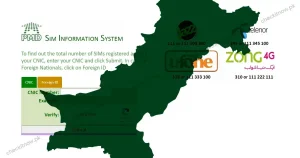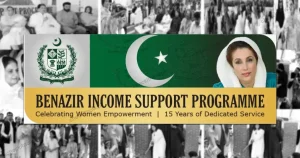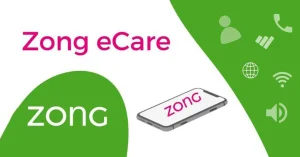Emergency Cash Program 2025 – Eligibility Criteria,Ehsaas
Application Steps & New Benefits
Pakistan’s Ehsaas Emergency Cash Program was originally launched duri
- Amount: PKR 25,000 per eligible household
- Eligibility: Low-income families, disaster-affected households, persons with disabilities, widows and other vulnerable groups
- Application: Send your CNIC to 8171 via SMS or apply through the Ehsaas 8171 web portal
- New Benefits in 2025: Crisis-based disbursements, simplified digital registration, inclusion of new categories
How to Apply:
- Check if you meet the eligibility criteria (income level, household status, crisis category).
- Text your CNIC number to 8171 or open the 8171 web portal.
- Enter required information (e.g. CNIC, family details) and submit.
- Wait for SMS confirmation or track your application; collect funds from the designated center.
Important: The Ehsaas Emergency Cash Program never charges fees or asks for bank details. Beware of fraudulent messages.
ng the COVID‑19 pandemic to provide immediate relief to low‑income households. Five years later it remains a vital support mechanism for communities hit by disasters, economic shocks and health crises. Under the current government, the program has evolved into a data‑driven safety net administered jointly by the Government of Pakistan, the Benazir Income Support Programme (BISP), NADRA and the 8171 portal. With new eligibility categories, crisis‑based disbursement policies and easier digital registration, Ehsaas Emergency Cash is more inclusive in 2025 than ever before.
Overview and Evolution
Ehsaas Emergency Cash sits within the wider Ehsaas Program, Pakistan’s largest social protection initiative launched in 2019. The program offers multi‑layered assistance through sub‑schemes such as Ehsaas Kafalat, Ehsaas Taleemi Wazaif, Ehsaas Nashonuma and Ehsaas Rashan Riayat. Since 2025 the program has continued under the BISP umbrella with improved transparency and digital accessibility.
Ehsaas Emergency Cash remains the rapid‑response arm of this portfolio. The initiative targets families affected by natural disasters (floods, droughts), national emergencies, inflation‑induced poverty, economic downturns and health crises. Assistance amounts now range between Rs. 12,000 and Rs. 25,000 per household, depending on the scale of the declared emergency. Payments are generally one‑off or short‑term and complement longer‑term stipends offered under Kafalat and other schemes.
Core Eligibility Criteria (2025 Update)
To ensure resources reach the poorest households, Ehsaas uses a means‑tested eligibility framework built on the National Socio‑Economic Registry (NSER). Key conditions for 2025 include:
• Monthly household income below Rs. 40,000.
• Registration in the NSER database.
• Employment status: daily wage worker, unemployed or affected by an economic shock.
• Property ownership: no more than one residential property.
• Utility consumption: electricity use under 300 units per month.
• Bank balance: less than Rs. 20,000.
• CNIC verification: valid CNIC is mandatory; verification is done via NADRA’s 8171 system.
In addition, families must not have members with regular government salaries or own luxury property; tax payers or individuals with frequent foreign travel history are generally disqualified. These conditions help ensure assistance goes to those most in need rather than well‑off households.
Emergency‑Specific Categories
Beyond the core factors above, the government activates crisis‑specific eligibility rounds when emergencies are declared. For 2025 these include:
| Emergency Type | Additional Criteria |
|—————|——————–|
| Floods or Monsoon Damage | Residence in NDMA‑declared flood zones; damage certificate from a district officer. |
| Earthquakes or Landslides | Proof of displacement plus location‑based eligibility. |
| Economic Crisis Relief | Unemployment verification or closure of a small business. |
| Inflation Adjustment Relief | NSER score above 32 but below 38; targeted to low‑income working class families. |
| Health Crises (e.g., Dengue) | Medical documentation showing a family member’s hospitalization or long‑term treatment. |
Priority Groups & Special Cases
Certain vulnerable populations are automatically considered for relief regardless of the emergency type. These include widows without regular income, senior citizens over 65, persons with disabilities, transgender individuals, orphans under legal guardianship and pregnant women in extreme poverty.
The program also allows field officers to recommend special cases. Examples include internally displaced families, victims of fires or infrastructure loss, parents of differently‑abled children, informal sector workers and transient labourers like brick‑kiln workers. These discretionary quotas enable humanitarian relief for applicants who might not meet the strict NSER criteria but face acute hardship.
Common Reasons for Rejection
Applications can still be rejected if applicants fail to meet documentation or eligibility standards. Common reasons include expired CNICs, high NSER scores (above 38), ownership of multiple properties or land, government employment within the household, active tax numbers or frequent foreign travel. Ensuring your CNIC is valid, your NSER data up‑to‑date and your assets disclosed accurately minimizes the chances of disqualification.
How Eligibility Is Verified
Ehsaas uses a combination of digital cross‑checks and manual surveys to verify applicants. The system integrates CNIC records from NADRA, NSER poverty scores, electricity and gas bill data, telecom SIM ownership, bank transaction history and geo‑tagging of high‑risk areas. For exception cases, field enumerators conduct door‑to‑door surveys and applicants may need to show proof of residency or damage and certificates of unemployment. This hybrid approach reduces fraud while accommodating genuine hardship cases.
How to Apply for Ehsaas Emergency Cash in 2025
Ehsaas offers three official channels for checking eligibility and applying. Beware of unofficial websites or agents requesting fees—registration is always free.
1. 8171 SMS Service
The simplest way to check eligibility is by sending your 13‑digit CNIC number via SMS to 8171. You will receive one of three responses: Eligible, Under Review (survey verification in progress) or Not Eligible. This service remains active in 2025. If eligible, follow instructions in the message to collect your payment or proceed with registration.
2. 8171 Web Portal
For a more detailed status check, visit the official 8171 portal (8171.bisp.gov.pk) and enter your CNIC number. The portal displays your current status and may prompt you to update household information. The online system also enables pre‑registration—if the portal shows “Not Registered,” you can input basic data that will be verified at your nearest BISP office.
3. Local BISP/Ehsaas Registration Centers
If you prefer in‑person support or need to correct your NSER record, visit the nearest Ehsaas Registration Center or BISP Tehsil Office. Bring your original CNIC, along with CNICs or B‑Forms for household members and recent utility bills. You’ll complete a survey form and undergo biometric verification via NADRA. After approval, you’ll receive an SMS from 8171 confirming your registration.
Required Documents
To expedite processing at Ehsaas centers, keep these documents handy:
• Original CNIC (and B‑Forms for children).
• Household electricity or gas bill.
• Proof of monthly income (if available).
• Death certificate (for widows applying).
• Disability certificate (if any family member is disabled).
Benefits Under the Ehsaas Program in 2025
Besides emergency cash, Ehsaas delivers multiple benefits to eligible households. Current stipends as of June 2025 include:
• Ehsaas Kafalat – Rs. 12,500 per quarter to support low‑income women and their families.
• Ehsaas Taleemi Wazaif – Monthly/quarterly stipends of Rs. 1,500–4,000 per child to encourage school attendance.
• Ehsaas Rashan Riayat – 30–40% discount on essential food items through registered shops.
• Ehsaas Emergency Cash – Up to Rs. 25,000 per family for calamity‑affected regions.
• Ehsaas Nashonuma – Monthly health and nutrition support for pregnant women and infants.
Payments are collected via designated Ehsaas payment centers, HBL Konnect, Bank Alfalah agents and partner banks. Always bring your original CNIC and the SMS confirmation when collecting funds.
Regional Quotas & Appeals
Relief budgets are allocated based on regional vulnerability indices. Provinces like Balochistan, interior Sindh and South Punjab often receive higher per‑capita disbursements during emergencies. Districts officially declared “calamity‑affected” by the NDMA or PDMA are automatically prioritized and residents in these areas are pre‑approved pending CNIC verification.
If you believe you were wrongly declared ineligible, you can file an appeal at your nearest BISP tehsil office. Submit your CNIC, utility bills and proof of income hardship, complete the appeal form and follow up via SMS or the web portal. Appeal reviews typically take up to 30 days.
Tips for a Successful Application
• Keep your CNIC valid and make sure your NSER record reflects current household data. An expired CNIC or outdated NSER information is a common reason for disqualification.
• Link your mobile number to your CNIC to receive SMS notifications and prevent fraud.
• Use only official channels (8171 SMS, 8171 portal, BISP offices). Avoid agents or websites that charge fees or request personal data.
• Prepare documents in advance – CNICs, utility bills and income proofs – to expedite in‑person registration.
Conclusion
The Ehsaas Emergency Cash Program remains a lifeline for millions of Pakistanis facing sudden hardship. In 2025, eligibility criteria are more refined yet more inclusive, ensuring that widows, seniors, people with disabilities and those affected by disasters or economic crises receive timely assistance. By leveraging digital verification and clear application channels, the program balances transparency with accessibility. Preparing your documents, keeping your records up‑to‑date and using official channels are the keys to a successful application. Stay informed through CheckItNow.pk for the latest updates on Ehsaas initiatives, payment schedules and registration tips.


